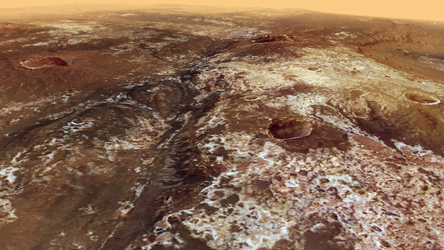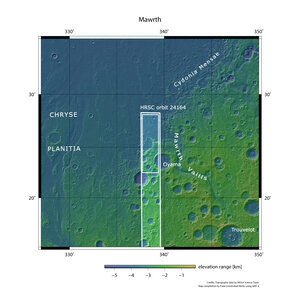Accept all cookies Accept only essential cookies See our Cookie Notice

About ESA
The European Space Agency (ESA) is Europe’s gateway to space. Its mission is to shape the development of Europe’s space capability and ensure that investment in space continues to deliver benefits to the citizens of Europe and the world.
Highlights
ESA - United space in Europe
This is ESA ESA facts Member States & Cooperating States Funding Director General Top management For Member State Delegations European vision European Space Policy ESA & EU Space Councils Responsibility & Sustainability Annual Report Calendar of meetings Corporate newsEstablishments & sites
ESA Headquarters ESA ESTEC ESA ESOC ESA ESRIN ESA EAC ESA ESAC Europe's Spaceport ESA ESEC ESA ECSAT Brussels Office Washington OfficeWorking with ESA
Business with ESA ESA Commercialisation Gateway Law at ESA Careers Cyber resilience at ESA IT at ESA Newsroom Partnerships Merchandising Licence Education Open Space Innovation Platform Integrity and Reporting Administrative Tribunal Health and SafetyMore about ESA
History ESA Historical Archives Exhibitions Publications Art & Culture ESA Merchandise Kids Diversity ESA Brand Centre ESA ChampionsLatest
Space in Member States
Find out more about space activities in our 23 Member States, and understand how ESA works together with their national agencies, institutions and organisations.
Science & Exploration
Exploring our Solar System and unlocking the secrets of the Universe
Go to topicAstronauts
Missions
Juice Euclid Webb Solar Orbiter BepiColombo Gaia ExoMars Cheops Exoplanet missions More missionsActivities
International Space Station Orion service module Gateway Concordia Caves & Pangaea BenefitsLatest
Space Safety
Protecting life and infrastructure on Earth and in orbit
Go to topicAsteroids
Asteroids and Planetary Defence Asteroid danger explained Flyeye telescope: asteroid detection Hera mission: asteroid deflection Near-Earth Object Coordination CentreSpace junk
About space debris Space debris by the numbers Space Environment Report In space refuelling, refurbishing and removingSafety from space
Clean Space ecodesign Zero Debris Technologies Space for Earth Supporting Sustainable DevelopmentLatest
Applications
Using space to benefit citizens and meet future challenges on Earth
Go to topicObserving the Earth
Observing the Earth Future EO Copernicus Meteorology Space for our climate Satellite missionsCommercialisation
ESA Commercialisation Gateway Open Space Innovation Platform Business Incubation ESA Space SolutionsLatest
Enabling & Support
Making space accessible and developing the technologies for the future
Go to topicBuilding missions
Space Engineering and Technology Test centre Laboratories Concurrent Design Facility Preparing for the future Shaping the Future Discovery and Preparation Advanced Concepts TeamSpace transportation
Space Transportation Ariane Vega Space Rider Future space transportation Boost! Europe's Spaceport Launches from Europe's Spaceport from 2012Latest

Mawrth Vallis martian mosaic
Thank you for liking
You have already liked this page, you can only like it once!
Sculpted by ancient water flowing on the surface, Mawrth Vallis is one of the most remarkable outflow channels on Mars. The valley, once a potentially habitable place, is one of the main features of a region at the boundary between the southern highlands and the northern lowlands.
Mawrth Vallis takes centre stage in this image, a bird’s eye view of a 330 000 sq km area surrounding the valley. With a length of 600 km and a depth of up to 2 km, it is one of the biggest valleys on Mars. Huge amounts of water once passed through it, from a higher elevation region, part of which is shown in the lower right of the image, into the northern plains, in the top left.
Among the remarkable features are the large exposures of light-toned phyllosilicates (weathered clay minerals) that lie along its course. Phyllosilicates on Mars are evidence of the past presence of liquid water and point to the possibility that habitable environments could have existed on the planet up until 3.6 billion years ago.
A dark cap rock, remains of ancient volcanic ash, covers many of the clays and could have protected traces of ancient microbes in the rocks from radiation and erosion. This makes Mawrth Vallis one of the most interesting regions for geologists and astrobiologists alike. It is one of the candidate landing sites for ExoMars 2020, a joint mission between ESA and Russia, with the primary goal of finding out if life once existed on Mars.
The name comes from the Welsh word for Mars (“Mawrth”) and the Latin for valley (“Vallis”). This mosaic was created using nine individual images taken by the high-resolution stereo camera on ESA’s Mars Express spacecraft, which has been orbiting Mars since late 2003. It is one of a set of images of this region previously published on 7 July 2016 on the DLR website and the homepage of the Freie Universität Berlin.
-
CREDIT
ESA/DLR/FU Berlin, CC BY-SA 3.0 IGO -
LICENCE
CC BY-SA 3.0 IGO or ESA Standard Licence
(content can be used under either licence)

Fly over Mawrth Vallis

A broader view of Mawrth Vallis

Perspective view of Mawrth Vallis (1)

Perspective view of Mawrth Vallis (3)















 Germany
Germany
 Austria
Austria
 Belgium
Belgium
 Denmark
Denmark
 Spain
Spain
 Estonia
Estonia
 Finland
Finland
 France
France
 Greece
Greece
 Hungary
Hungary
 Ireland
Ireland
 Italy
Italy
 Luxembourg
Luxembourg
 Norway
Norway
 The Netherlands
The Netherlands
 Poland
Poland
 Portugal
Portugal
 Czechia
Czechia
 Romania
Romania
 United Kingdom
United Kingdom
 Slovenia
Slovenia
 Sweden
Sweden
 Switzerland
Switzerland
























